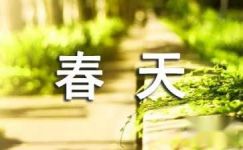关于中国四大传统节日英文介绍
中国四大传统节日:春节,中秋节,端午节,清明节

元宵节
The Lantern Festival (元宵节) is the last day of the Chinese New Year celebration. This day is for the last moment for setting off fireworks, the last excuse for eating a big feast and the last chance for family getting together before the “年”
celebrations are over. (Latern Festival is also a traditional time of celebration for foreigners who live in China).
The Lantern Festival, the 15th of the first month of the lunar calendar, is the first full moon of the year. Celebrations and traditions on this day date back to the Western Han Dynasty.
Traditions for this festival: as the name indicates, hanging and looking at
lanterns is the main tradition. Lanterns of various shapes and sizes are displayed on trees, or along river banks.
Parents often take their children to Lantern Fairs and sometimes lucky kids even get a mini toy lantern.
Another tradition is guessing lantern riddles. These are riddles that are hung on lanterns for people to shoot down and solve. The riddles are usually short, wise, and sometimes humorous. The answer to a riddle can be a Chinese character, a famous person's name, a place name or a proverb. This tradition has become a
popular game with serious staying power even as social development changes other traditions.
Other than that, the most important thing to do today is to eat sweet
dumplings. In northern China, sweet dumplings made of glutinous rice flour are called “元宵” while in southern part they are called “汤圆”. Typical sweet
dumplings are filled with black sesame sauce, sweetened bean paste, or hawthorn. Making “元宵” today is like a game or an activity, so it's seldom done without a reason and a group of friends or family present to help out.
端午节
The Dragon Boat Festival, also called the Duanwu Festival, is celebrated on the fifth day of the fifth month according to the Chinese calendar. For thousands of years, the festival has been marked by eating zong zi (glutinous rice(糯米)wrapped to form a pyramid using bamboo or reed leaves) and racing dragon boats.
The festival is best known for its dragon-boat races, especially in the southern provinces where there are many rivers and lakes. Thisregatta(赛舟会)commemorates the death of Qu Yuan , an honest minister who is said to have committed suicide by drowning himself in a river. Qu was a minister of the State of Chu situated in present-day Hunan and Hubei provinces, during theWarring States Period(475-221BC)(战国时期). He was upright, loyal and highly esteemed for his wise counsel that brought peace and prosperity to the state. However, when a dishonest and corrupt prince vilified Qu, he was disgraced and dismissed from office. Realizing that the country was now in the hands of evil and corrupt officials, Qu grabbed a large stone and leapt into the Miluo River on the fifth day of the fifth month. Nearby fishermen rushed over to try and save him but were unable to even recover his body. Thereafter, the state declined and was eventually conquered by the State of Qin. The people of Chu who mourned the death of Qu threw rice into the river to feed his ghost every year on the fifth day of the fifth month. But one year, the spirit of Qu appeared and told the mourners that a hugereptile(爬行动物)in the river had stolen the rice. The spirit then advised them to wrap the rice in silk and bind it with five different-colored threads before tossing it into the river.
During the Duanwu Festival, a glutinous rice pudding called zong zi is eaten to symbolize the rice offerings to Qu. Ingredients such as beans,lotus seeds(莲子),chestnuts(栗子), pork fat and the golden yolk of a salted duck egg are often added to the glutinous rice. The pudding is then wrapped with bamboo leaves, bound with a kind of raffia and boiled in salt water for hours.
The dragon-boat races symbolize the many attempts to rescue and recover Qu's body. A typical dragon boat ranges from 50-100 feet in length, with a beam of about 5.5 feet, accommodating two paddlers seated side by side.
A wooden dragon head is attached at the bow, and a dragon tail at thestern(船尾). A banner hoisted on a pole is also fastened at the stern and the hull is decorated with red, green and blue scales edged in gold. In the center of the boat is a canopied shrine behind which the drummers,gong(铜锣)beaters andcymbal(铙钹)players are seated to set the pace for the paddlers. There are also men positioned at the bow to set off firecrackers, toss rice into the water and pretend to be looking for Qu. All of the noise and pageantry creates an atmosphere of gaiety and excitement for the participants and spectators alike. The races are held among different clans, villages and organizations, and the winners are awarded medals, banners, jugs of wine and festive meals.
清明节
Qing Ming is a time to remember the dead and the dearly departed. More important, it is a period to honour and to pay respect to one's deceased ancestors and family members. Because it reinforces the ethic of filial piety, Qing Ming is a major Chinese festival. Literally meaning "clear" (Qing) and "bright" (Ming), this Chinese festival falls in early spring, on the 106th day after the winter solstice. It is a "spring" festival, and it is an occasion for the whole family to leave the home and to sweep the graves of their forebears. Chinese being practical people this sweeping of the graves is given an extended period, that is, 10 days before and after Qing Ming day. Among some dialect groups a whole month is allocated. 清明节是一个纪念祖先的节日。主要的纪念仪式是扫墓,扫墓是慎终追远、郭亲睦邻及行孝的具体表现;基于上述意义,清明节因此成为华人的重要节日。 清明节是在仲春和暮春之交,也就是冬至后的106天。扫墓活动通常是在清明节的前十天或后十天。有些地域的人士
的扫墓活动长达一个月。
ORIGIN
(起源)
Qing Ming is popularly associated with Jie Zi Zhui, who lived in Shanxi province in 600
B.C. Legend has it that Jie saved his starving lord's life by serving a piece of his own leg. When the lord succeeded in becoming the ruler of a small principality, he invited his faithful follower to join him. However, Jie declined his invitation, preferring to lead a hermit's life with his mother in the mountains. Believing that he could force Jie out by burning the mountain, the lord ordered his men to set the forest on fire. To his consternation, Jie chose to remain where he was and was burnt to death. To commemorate Jie, the lord ordered all fires in every home to be put out on the anniversary of Jie's death. Thus began the "cold food feast", a day when no food could be cooked since no fire could be lit. The "cold food" festival occurs on the eve of Qing Ming and is often considered as part of the Qing Ming festival. As time passes, the Qing Ming festival replaced the "cold food" festival. Whatever practice is observed,the basic observation of Qing Ming is to remember one's elders by making a special effort to visit their graves, ashes or ancestral tablets. To make the visit even more meaningful, some time should be spent to remind the younger members of the family of the lives and contributions of their ancestors, and the story of Jie Zi Zhui who choose death over capitulation. 谈到清明节,有点历史知识的人,都会联想到历史人物介子椎。据历史记载,在两千多年以前的春秋时代,晋国公子重耳逃亡在外,生活艰苦,跟随他的介子椎不惜从自己的腿上割下一块肉让他充饥。后来,重耳回到晋国,作了国君(即晋文公,春秋五霸之一),大事封赏所有跟随他流亡在外的随从,惟独介子椎拒绝接受封赏,他带了母亲隐居绵山。 晋文公无计可施,只好放火烧山,他想,介子椎孝顺母亲,一定会带着老母出来。谁知这场大火却把介子椎母子烧死了。为了纪念介子椎,晋文公下令每年的这一天,禁止生火,家家户户只能吃生冷的食物,这就是寒食节的来源。 寒食节是在清明节的前一天,古人常把寒食节的活动延续到清明,久而久之,清明取代了寒食节。拜介子椎的习俗也变成了清明扫墓的习俗了。无论以何种形式纪念,为了使纪念祖先的仪式更有意义,我们应该让年轻一代的家庭成员了解先人过去的奋斗历史,当然,还要学习
2
1、)清 明节扫风墓俗 介子椎宁死不屈的气节。 清明时节祭扫祖坟(俗称"上坟")。无锡的传统民俗较有代表性。扫墓时要挑些新士壅坟茔,而且凡新坟一定要在清明前祭扫,旧坟可以过清明.但不能过立夏。新媳妇一定要去祭扫祖坟,俗称"上花坟"。扫墓时用荤、素菜肴和酒、饭等祭奠。后用干果糕点等替代。 时至今
日,在烈士陵园缅怀革命先烈成为清明节里很重要的内容,在祭炎黄二祖、悼念自己的先祖的同时,缅怀先烈的丰功伟绩,使今天的清明活动具有了更重要的教育意义。
2) 踏青 清明时节,气候温暖和煦,大地皆春,处处鲜花嫩草,一片生机盎然,人们纷纷外出踏青。在无锡,踏青的最好场所莫过于惠山。不上惠山的`,上城墙绕城而走,叫登高踏青。东门东林庵一带,为士女聚集处,故有"东林庵里看桃花"的说法。这天,也是东乡胶山和北乡斗山的节场,附近还有赛会,故斗山别名清明山。人们都上山踏青,赶节场,观看赛会。从元宵节至清明节,大人孩子,三五成群,到野外放凤筝,别有情趣。
3) 门旁插柳和戴柳枝帽 清明节那天,有家家门口插柳条的风俗。在一些地区,还流行小孩带柳枝帽的风俗。 门旁插柳和戴柳枝帽习俗的来源也是根据介子椎的传说。据说,介子椎是死在柳树下面的。介子椎死后的第二年晋文公率领群臣到绵山致祭,一行人先在山下寒食一日,第二天才上山。那棵柳树,已经长出了翠绿的嫩条。晋文公看了,心中忽有所感,便走上前去,掐了一丝,编成一个圈儿带在头上。随从的臣下看了,也纷纷仿效他折柳插头。晋文公便把这棵柳树赐名
3
清明节即是节气又是节日。从节气上来说,它是24节气之一。 我国2000多年前的秦汉时期已基本形成了24节气。24节气综合了天文学和气象学等方面的知识,编排了"春雨惊春清谷天,夏满芒夏暑相连。秋处露秋寒霜降,冬雪雪冬小大寒"的歌谣。其中清明被排在歌谣的第五位。也是农历历法中的第五个节气。 此时,天气转暖,大地回春,万物复苏,一片生机盎然,家家门口插柳条,祭扫坟墓和郊外踏青。农谚中也有"清明忙种粟"的说法。作为以花信为标志的花信风。清明的花期为一侯桐花,二侯麦花,三侯柳花,充分点明了清明节气的花期和花种。《岁时百问》说"万物生长此时,皆清洁而明净,故谓之清明"。
中秋节
The Midautumn Festival is the traditional festival in this day,people ,espically family members will have a happy Chinese people vaule this festival for its important meaning of "reunion" the mooncake is the symbolic represents the "reunion" just like the full moon.
Chinese Mid-Autumn Festival is one of the four major traditional festivals.中秋节是中国四大传统节日之一。
There are evening meal, people who work outside the home have to come back happy. 、清明与节气 为清明柳,把这一天定为清明节。

